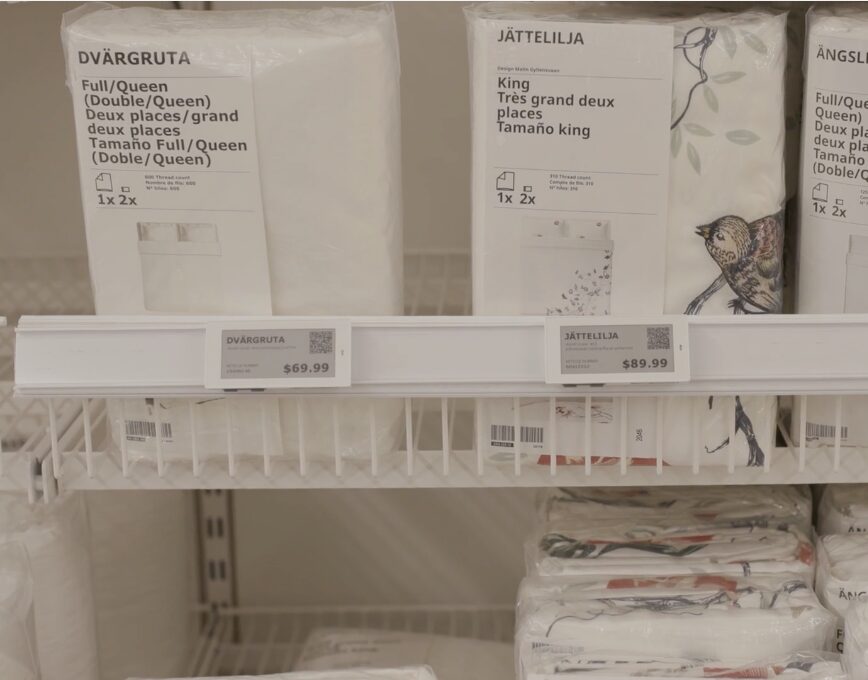Keep it simple! Complicated systems and rules are a form of paralysis

Remember that the fear of doing something wrong results in indecisiveness, analyses, project groups and endless discussions. Keep it simple! Complicated systems and rules are a form of paralysis. “
In my last post, I discussed the QR-code solution we developed for stores. A natural progression from this is the concept of P-tags. These are the paper labels you see on products in stores, providing basic information.
Aware of our competitors’ shift towards digital solutions, including the adoption of e-ink devices in brick-and-mortar stores, we knew we had to innovate. As is typical in large enterprises, the decision-making process was slow, involving numerous stakeholders.
But, by now, you know me 😉 We didn’t just wait. Led by Jerome Mottas, we partnered with a few stores and an external supplier to create and implement a solution. This initiative was an nice venture, especially considering it was driven by my small team in collaboration with our store colleagues.
We gained real data, realized cost savings, and received very positive feedback from our colleagues. Jerome’s ability to measure the exact impact based on real data was nothing short of a product manager’s dream. It underscored our belief in action over lengthy discussions. 💛 💙
As a famous furniture dealer once said, “Remember that the fear of doing something wrong results in indecisiveness, analyses, project groups and endless discussions. Keep it simple! Complicated systems and rules are a form of paralysis. Working parties, reports and paperwork consume a lot of time and energy and cost a great deal of money. Make decisions on a local level wherever possible. And don’t forget: a small team with a lot of decision-making power can deliver a knock-out punch to sluggish bureaucracy”
I empowered my team with the decision-making authority they needed. And while things slowed down with the digital P-tags after my departure, the path we carved continues to evolve, promising significant global improvement and savings.
This journey proved our hypothesis: a small, empowered team can indeed deliver impactful results. I always feared such innovative teams might end up working for our competitors.
To maintain confidentiality, I’ve omitted specific suppliers, numbers and locations. Stay tuned for more in the Edge Engineering series and feel free to share your thoughts and experiences below.
Picture: Our solution!


